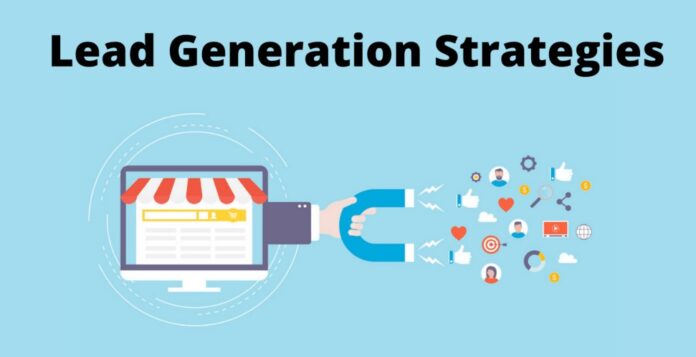In today’s business world, lead generation is essential for growth and success. And one platform that has proven to be especially effective for generating leads on LinkedIn. With more than 700 million users worldwide, LinkedIn is a treasure trove of opportunities to reach potential customers and make valuable connections.
An effective lead generation strategy on LinkedIn starts with automation. What does this mean? It’s about using tools and software to streamline and optimize lead generation tasks on LinkedIn. Automating LinkedIn can be especially useful for those who have a large network of contacts and want to make the most of it.
So how can you generate leads with LinkedIn? One of the most effective ways is to use lead generation tools on LinkedIn. These tools allow you to filter and search for specific contacts that fit your target market. You can define criteria such as location, work experience, industry, and other relevant details. By using these tools, you can focus on those users who are most likely to be interested in your products or services.
Understanding the target audience and defining objectives
The first step in developing an effective lead generation strategy is to identify the target market. It involves establishing and identifying the buyer persona or target audience. By understanding the demographics, interests, and behaviors of your potential customers, you can tailor your marketing efforts to better reach and interact with them.
Market research is crucial in this step, as it helps you gather data and insights about your target market. This information can be used to create more effective and targeted marketing campaigns, which helps you in generating higher quality LinkedIn leads and better conversion rates.
Defining goals and objectives is another key component of an effective lead-generation strategy. This step involves setting clear and measurable goals for your marketing efforts, such as increasing website traffic, generating more leads, or improving conversion rates.
By defining these objectives, you can create a more focused and effective marketing strategy that aligns with your business objectives. It is essential to ensure that your objectives are specific, measurable, achievable, relevant, and time-bound (SMART). It will help keep your team focused and motivated and ensure your LinkedIn lead-generation efforts are aligned with your overall business strategy.
Analyzing the competition is also a crucial step in developing an effective lead-generation strategy. By understanding the strengths and weaknesses of your competitors, you will be able to identify opportunities to differentiate yourself and stand out in the marketplace. It involves conducting a thorough analysis of your competitors’ marketing strategies, identifying their target audience, and understanding their unique selling propositions (USPs).
This information can be used to create a more effective and targeted marketing strategy that resonates better with your potential customers. By following these steps, you can create an effective strategy to generate high-quality LinkedIn leads and help your company achieve its goals.
Develop a lead generation plan

Creating a landing page is an essential component of any effective lead-generation strategy. A landing page is a web page designed to capture a visitor’s information, such as their name and email address, in exchange for something of value, such as a free e-book or discount code.
To create an optimized landing page, it is important to include calls to action for conversion, post relevant case studies, and publish customer testimonials. By creating a landing page designed specifically to capture leads, companies can increase their chances of converting website visitors into leads.
Offering value propositions is another crucial aspect of lead generation strategy. A value proposition is a statement that explains what a company can offer its potential customers and how it can solve their problems or meet their needs.
To create an effective value proposition, companies need to better understand the interests of their target audience and develop a more segmented approach. By offering a value proposition that is tailored to the specific needs and desires of their target audience, companies can increase their chances of attracting and generating leads on LinkedIn.
Creating a lead magnet is another effective way to generate leads. A lead magnet is a free offer designed to entice visitors to provide their contact information. Examples of lead magnets include e-books, white papers, webinars, and free trials.
To create an effective lead magnet, companies need to create valuable content that is relevant to their target audience. By offering a lead magnet that is tailored to the specific interests and needs of their target audience, companies can increase their chances of attracting and converting leads. By implementing these strategies, companies can generate leads on LinkedIn, increase their customer base and ultimately grow their business.
Implementing and measuring your lead generation plan
To implement an effective lead generation plan, companies should use various channels to reach their target audience. Email marketing is one of the most popular and effective means of communication, allowing companies to reach potential customers directly.
Other channels that can be used include social media platforms, search engine optimization, content marketing, and paid advertising. By using a combination of these channels, businesses can increase their reach and attract a greater number of potential customers. It is crucial to identify the channels that work best for the target audience and allocate resources accordingly.
Measuring the effectiveness of the lead generation plan is crucial to refine and optimize the campaign for better results. Companies should define clear metrics and objectives from the outset to track the success of the campaign. Key performance indicators (KPIs), such as cost per lead (CPL), conversion rate, and lead quality, can be used to measure the effectiveness of the marketing budget.
LinkedIn personalization and automation are also effective strategies for improving the effectiveness of lead generation campaigns on LinkedIn. By regularly monitoring and analyzing data, companies can make informed decisions and adjust their strategy as needed.

Refining the LinkedIn lead generation plan is an ongoing process that involves testing and optimizing various aspects of the campaign. Identifying the target audience is a critical step in any marketing strategy. Companies must continually refine and optimize their campaigns for better results, taking into account feedback and insights gained from the data.
By implementing innovative and effective lead-generation strategies, companies can attract more customers and increase their chances of converting leads into buyers.










